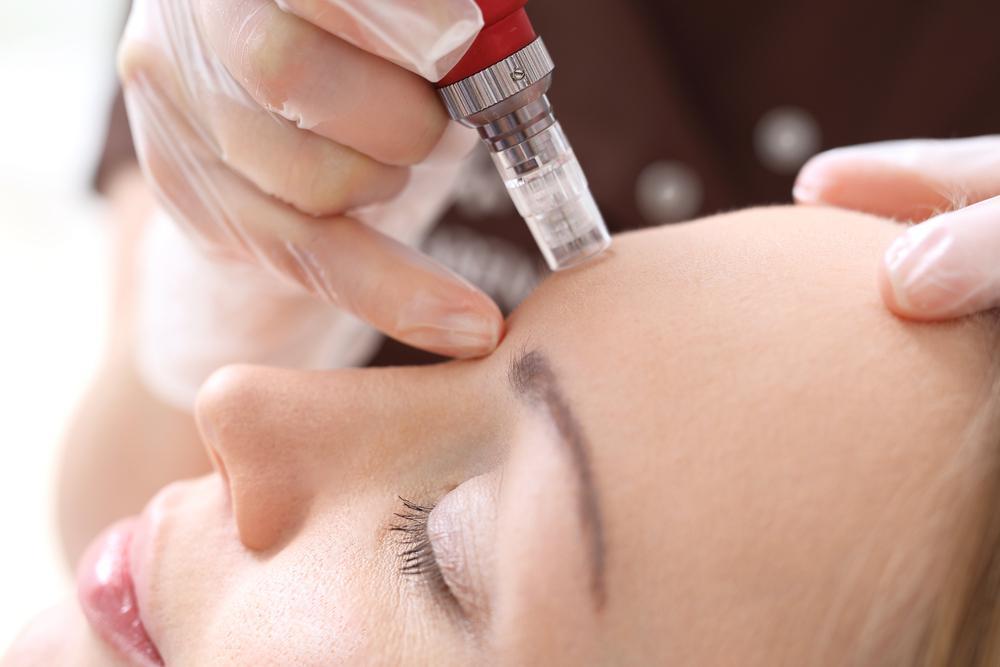
Microneedling vs. Microdermabrasion: Which Is Better?
Healthy skin is a beautiful thing. When your skin is smooth and clear, you look and feel younger and seem to exude confidence. If your blemishes and imperfections have you searching for a solution, microneedling and microdermabrasion may be the answer. Both are safe and effective ways to treat your skin issues, but the processes and results are slightly different.
Dr. Sumedha Dalvi at Purple Lotus Aesthetics helps patients throughout Fayetteville, North Carolina, get rid of the minor lines, wrinkles, scars, and spots that tend to diminish self-esteem and confidence. She uses two of the most popular and effective methods — microdermabrasion and microneedling — to help you achieve your skin health and aesthetic goals. Here’s what you need to know about each procedure.
Microdermabrasion
Compared to microneedling, microdermabrasion is a milder procedure that exfoliates the skin’s surface to get rid of minor imperfections, brighten your tone, and smooth the texture of your skin.
Microdermabrasion can be applied in two ways. One method uses sodium bicarbonate crystals, or aluminum oxide along with a suctioning instrument that causes an abrasive action on your skin. The other method uses an applicator that has an abrasive surface so Dr. Dalvi can gently sand away the top layer of your skin to remove the tiny lines, fine wrinkles, age spots, and small scars.
Microdermabrasion is a good choice for treating a variety of skin conditions, including:
- Fine lines and wrinkles
- Minor scars
- Acne scarring
- Uneven skin tone
- Patchy hyperpigmentation (melasma)
- Sun damage
- Stretch marks
During the microdermabrasion procedure, you may experience some stinging and tingling, but most people don’t describe the process as painful. It’s normal to see some redness of the treated area after your microdermabrasion session and you may have increased sensitivity for a while. Dr. Dalvi recommends staying out of direct sunlight for a few weeks until your skin has completely recovered, and always use sunscreen.
You can expect to see improved skin tone and texture immediately, but Dr. Dalvi may suggest multiple treatments, depending on the severity of your skin issues. Once your session is over, which takes anywhere from 30 minutes to an hour, you can leave our office and return to your normal activities right away with no down time.
Microneedling
Microneedling treats many of the same conditions as microdermabrasion, but uses a completely different approach. More than a powerful exfoliant, microneedling works beneath the surface of your skin. Dr. Dalvi uses an instrument called a dermaroller that has almost 200 tiny needles on its surface. When she runs the dermaroller over your skin, it makes thousands of miniscule holes at controlled depths to reach into your outer layer of skin and even dip into your dermis.
The biggest advantage microneedling has over microdermabrasion is that this perforation procedure actually stimulates your body’s natural production of collagen and elastin in the dermis. It has even shown to promote the growth of new capillaries. The regenerative properties of microneedling make it ideal for treating not only the same skin issues as microdermabrasion, but these more stubborn conditions as well:
- Burn scars
- Large pores
- Skin laxity
Because it’s slightly more assertive than microdermabrasion, microneedling may be a little more uncomfortable during your session. If you are particularly sensitive, Dr. Dalvi can use a topical anesthetic to keep you comfortable. After your treatment, you can expect some redness and swelling, and perhaps a little bleeding. Those side effects generally subside by the next day.
You will likely need more than one microneedling treatment to achieve maximum results, and Dr. Dalvi can set you up with a schedule customized for you. As with microdermabrasion, it’s important to protect you skin after the procedure, so make sure you stay out of the sun and apply sunscreen regularly.
So which is better, microneedling or microdermabrasion? The answer depends on the severity of your skin condition and your personal preference. Some people even combine the two treatments to get the best of both. Another option is to couple one of these treatments with dermal fillers or Botox® for optimal results.
When you’re ready to change the way your skin looks and feels, call our office or click the “Book Online” button to schedule an appointment soon.


0 comment